The origin of life on Earth: hypotheses, theories, basic concepts
It is known that scientific journals try not to accept for publication articles devoted to problems that attract general attention, but do not have a clear solution - a serious physics publication will not publish a project of a perpetual motion machine. This topic has become the origin of life on Earth. The question of the emergence of living nature, the appearance of man, has been worrying thinking people for many millennia, and only creationists - supporters of the divine origin of all things - have found an unambiguous answer for themselves, but this theory is not scientific as not subject to verification.
The views of the ancients
Ancient Chinese and ancient Indian manuscripts tell about the emergence of living beings from water and decaying remains, ancient Egyptian hieroglyphs and cuneiform writing of Ancient Babylon describe the birth of amphibious creatures in the muddy deposits of large rivers. The hypotheses of the origin of life on Earth through spontaneous generation were obvious for the sages of the distant past.
Ancient philosophers also gave examples of the appearance of animals from inanimate matter, but their theoretical foundations were of a different nature: materialistic and idealistic. Democritus (460-370 BC) found the reason for the emergence of life in a special interaction of the smallest, eternal and indivisible particles - atoms. Plato (428-347 BC.) And Aristotle (384-322 BC.
The idea of the existence of some kind of "life force" that contributes to the emergence of living things, turned out to be very persistent. She formed the views on the origin of life on Earth among many scientists who lived in the Middle Ages and later, up to the end of the 19th century.
Spontaneous generation theory
Anthony van Leeuwenhoek (1632-1723), with the invention of the microscope, made the smallest microorganisms discovered by him the main subject of dispute between scientists who shared the two main theories of the origin of life on Earth - biogenesis and abiogenesis. The former believed that all living things can be the product of only living things, the latter believed that spontaneous generation of organic matter in solutions placed in special conditions is possible. The essence of this dispute has not changed until now.
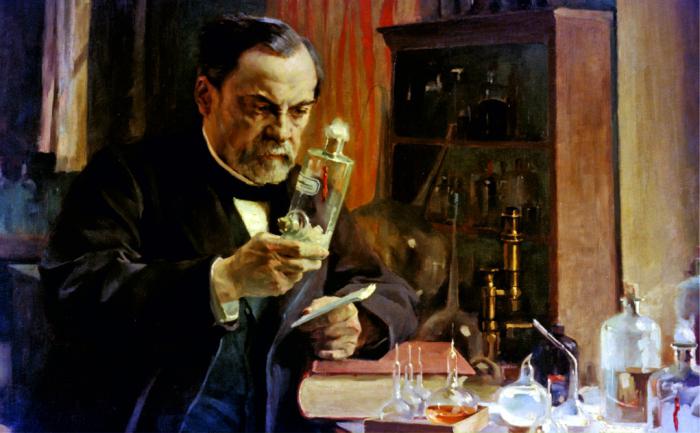
The experiments of some naturalists proved the possibility of the spontaneous emergence of the simplest microorganisms, the supporters of biogenesis completely denied such a possibility. Louis Pasteur (1822-1895), using strictly scientific methods and high correctness of his experiments, proved the absence of a mythical life force transmitted through the air and giving rise to living bacteria. However, in his works, he admitted the possibility of spontaneous generation in some special conditions, which scientists of future generations had to find out.
Evolution theory
The works of the great Charles Darwin (1809-1882) shook the foundations of many natural sciences. The emergence of a huge variety of biological species from one common ancestor, proclaimed by him, again made the origin of life on Earth the most important issue of science. The theory of natural selection had a hard time finding its adherents in the beginning, and now it is undergoing critical attacks, which look quite reasonable, but it is Darwinism that underlies modern natural sciences.
After Darwin, biology could not consider the origin of life on Earth from the previous positions. Scientists of many branches of biological science were convinced of the truth of the evolutionary path of development of organisms. Let the modern views on the common ancestor, placed by Darwin at the foundation of the Tree of Life, have changed in many ways, but the truth of the general concept is unshakable.

Stationary state theory
Laboratory refutation of spontaneous spontaneous generation of bacteria and other microorganisms, awareness of the complex biochemical structure of the cell, together with the ideas of Darwinism, had a particular impact on the emergence of alternative versions of the theory of the origin of life on Earth. In 1880, one of the new judgments was proposed by William Preyer (1841-1897). He believed that there was no need to talk about the birth of life on our planet, since it exists forever, and it did not have a beginning as such, it is unchanging and constantly ready for rebirth in any suitable conditions.
The ideas of Preyer and his followers are only of purely historical and philosophical interest, because later astronomers and physicists calculated the terms of the final existence of planetary systems, recorded a constant but steady expansion of the Universe, that is, it was never eternal or constant.
The desire to view the world as a single global living entity echoed the views of the great scientist and philosopher from Russia - Vladimir Ivanovich Vernadsky (1863-1945), who also had his own idea of the origin of life on Earth. It was based on the understanding of life as an integral characteristic of the Universe, space. According to Vernadsky, the fact that science could not find layers that did not contain traces of organic matter spoke of the geological eternity of life. One of the ways in which life appeared on the young planet, Vernadsky called its contacts with space objects - comets, asteroids and meteorites. Here his theory merged with another version, which explained the origin of life on Earth by the panspermia method.
The cradle of life is space
Panspermia (Greek - "seed mixture", "seeds are everywhere") considers life a fundamental property of matter and does not explain the ways of its origin, but calls the cosmos the source of the embryos of life that fall on celestial bodies with conditions suitable for their "germination".
The first mention of the basic concepts of panspermia can be found in the writings of the ancient Greek philosopher Anaxagoras (500-428 BC), and in the 18th century, the French diplomat and geologist Benoit de Maye (1656-1738) spoke about it. These ideas were revived by Svante August Arrhenius (1859-1927), Lord Kelvin William Thomson (1824-1907) and Hermann von Helmholtz (1821-1894).
The study of the cruel effect on living organisms of cosmic radiation and the temperature conditions of interplanetary space made such hypotheses of the origin of life on Earth not very relevant, but with the beginning of the space era, interest in panspermia increased.
In 1973, the Nobel laureate Francis Crick (1916-2004) expressed the idea of the extraterrestrial production of molecular living systems and their hitting the Earth with meteorites and comets. At the same time, the chances of abiogenesis on our planet were assessed by him as very low. The prominent scientist did not consider the origin and development of life on Earth by the method of self-assembly of high-level organic matter to be a reality.
Fossilized biological structures have been found in meteorites all over the planet, similar traces have been found in soil samples delivered from the Moon and Mars. On the other hand, numerous experiments are being carried out on the processing of biostructures by influences that are possible when they are in outer space and during the passage of an atmosphere similar to that of the earth.
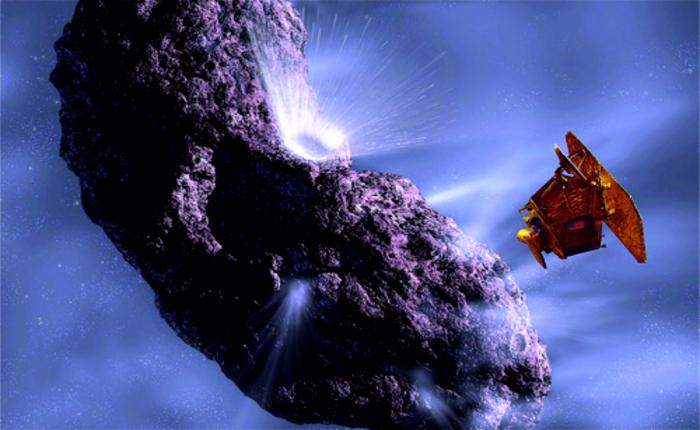
An important experiment was carried out in 2006 as part of the Deep Impact mission. Tempel's comet was rammed by a special impactor probe launched by an automated vehicle. Analysis of the cometary matter, which was released as a result of the impact, showed the presence of water and various organic compounds in it.
Conclusion: Since its inception, the theory of panspermia has changed significantly. Modern science interprets in a different way those primary elements of life that could have been delivered to our young planet by space objects. Research and experiments prove the viability of living cells under conditions of interplanetary travel. All this makes the idea of the extraterrestrial origin of terrestrial life relevant. The main concepts of the origin of life on Earth are theories in which panspermia is included either as the main part, or as a way of delivering components to Earth to create living matter.
Oparin-Haldane Theory of Biochemical Evolution
The idea of spontaneous generation of living organisms from inorganic substances has always remained almost the only alternative to creationism, and in 1924 a 70-page monograph was published, giving this idea the strength of a well-developed and well-founded theory. This work was called "The Origin of Life", its author was a Russian scientist - Alexander Ivanovich Oparin (1894-1980). In 1929, when Oparin's works had not yet been translated into English, similar concepts of the origin of life on Earth were expressed by the English biologist John Haldane (1860-1936).
Oparin theorized that if the primitive atmosphere of the young planet Earth was reductive (i.e., oxygen-free), a powerful burst of energy (such as lightning or ultraviolet radiation) could facilitate the synthesis of organic compounds from inorganic matter. In the future, such molecules could form clots and clusters - coacervate drops, which are protoorganisms, around which water jackets are formed - the rudiments of the membrane-shell, stratification occurs, giving rise to a difference in charges, which means that movement is the beginning of metabolism, the rudiments of metabolism, etc. Coacervates were considered the basis for the beginning of the evolutionary processes that led to the creation of the first life forms.
Haldane introduced the concept of "primordial soup" - the initial earthly ocean, which became a huge chemical laboratory, connected to a powerful source of power - sunlight. The combination of carbon dioxide, ammonia and ultraviolet radiation has resulted in a concentrated population of organic monomers and polymers. Subsequently, such formations were combined with the appearance of a lipid membrane around them, and their development led to the formation of a living cell.
The main stages of the origin of life on Earth (according to Oparin-Haldane)
According to the theory of the origin of the Universe from a bunch of energy, the Big Bang occurred about 14 billion years ago, and about 4.6 billion years ago, the creation of the planets of the solar system was completed.
The young Earth, gradually cooling down, acquired a hard shell around which the atmosphere was formed. The primary atmosphere contained water vapor and gases, which later served as raw materials for organic synthesis: carbon monoxide and dioxide, hydrogen sulfide, methane, ammonia, cyanide compounds.
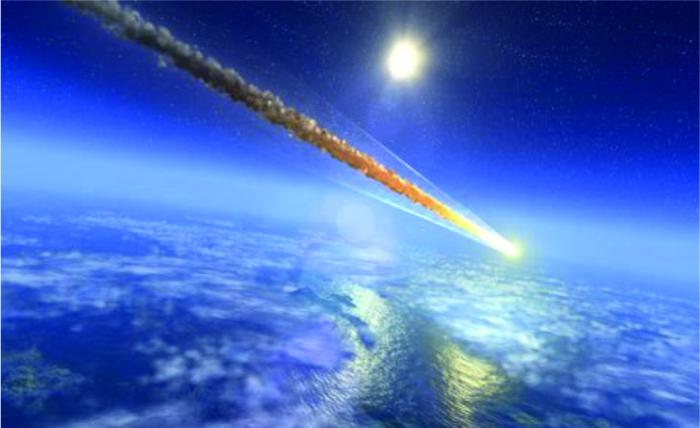
The bombardment by space objects containing frozen water and the condensation of water vapor in the atmosphere led to the formation of the World Ocean, in which various chemical compounds were dissolved. Powerful thunderstorms accompanied the formation of an atmosphere through which strong ultraviolet radiation penetrated. In such conditions, the synthesis of amino acids, sugars and other simple organics took place.
At the end of the first billion years of the Earth's existence, the process of polymerization in water of the simplest monomers into proteins (polypeptides) and nucleic acids (polynucleotides) began. They began to form prebiological compounds - coacervates (with the rudiments of the nucleus, metabolism and membrane).
3.5-3 billion years BC - the stage of the formation of protobionts, which have self-reproduction, regulated metabolism, a membrane with variable permeability.
3 billion years BC NS. - the emergence of cellular organisms, nucleic acids, primary bacteria, the beginning of biological evolution.
Experimental evidence for the Oparin-Haldane conjecture
Many scientists positively assessed the basic concepts of the origin of life on Earth on the basis of abiogenesis, although from the very beginning they found bottlenecks and ambiguities in the Oparin-Haldane theory. In different countries, work began on conducting test studies of the hypothesis, of which the most famous is the classic experiment conducted in 1953 by American scientists Stanley Miller (1930-2007) and Harold Urey (1893-1981).
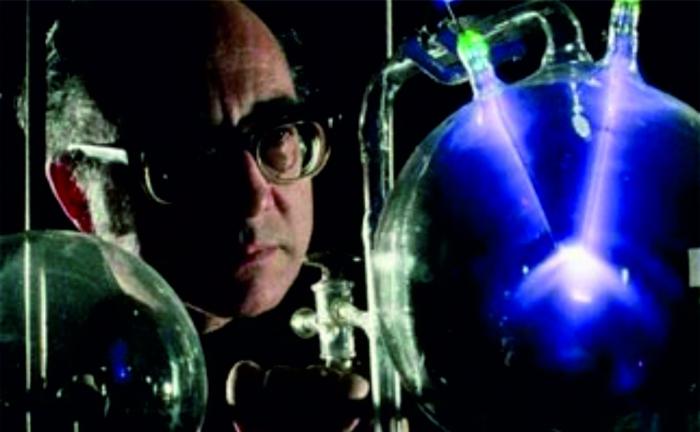
The essence of the experiment was to simulate in the laboratory the conditions of the early Earth, in which the synthesis of the simplest organic compounds could take place. A gas mixture circulated in the device, similar in composition to the primary earth's atmosphere. The design of the device provided an imitation of volcanic activity, and electric discharges passed through the mixture created the effect of lightning.
After a week of circulation of the mixture through the system, the transition of a tenth of carbon into organic compounds was noted, amino acids, sugars, lipids and compounds preceding amino acids were found. Repeated and modified experiments have fully confirmed the possibility of abiogenesis in the simulated conditions of the early Earth. In subsequent years, repeated experiments were carried out in other laboratories. Hydrogen sulfide was added to the composition of the gas mixture as a possible component of volcanic emissions, and other non-cardinal changes were introduced. In most cases, the experience of synthesizing organic compounds was successful, although attempts to go further and obtain more complex elements, approaching in composition to a living cell, were not crowned with success.
RNA world
By the end of the 20th century, many scientists who were not ceasing to be interested in the problem of the origin of life on Earth, it became clear that with all the harmony of theoretical constructions and clear experimental confirmation, the Oparin-Haldane theory has obvious, perhaps insurmountable, flaws. The main one was the impossibility of explaining the appearance in protobionts of the properties that are decisive for a living organism - to reproduce with the preservation of hereditary characteristics. With the discovery of genetic cellular structures, with the definition of the function and structure of DNA, with the development of microbiology, a new candidate appeared for the role of the molecule of primordial life.
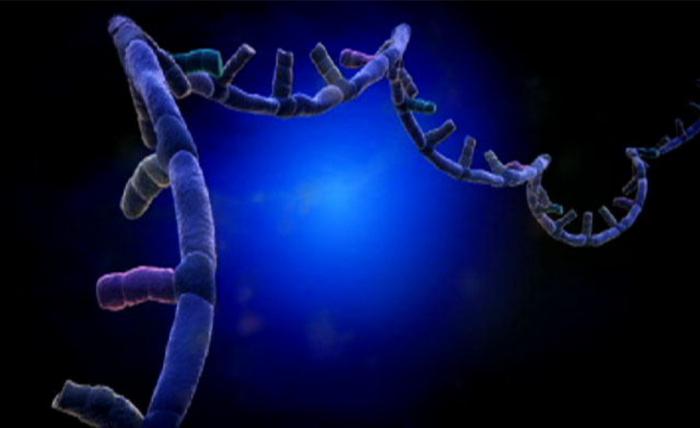
It was a molecule of ribonucleic acid - RNA. This macromolecule, which is part of all living cells, is a chain of nucleotides - the simplest organic units consisting of nitrogen atoms, a monosaccharide - ribose and a phosphate group. It is the sequence of nucleotides that is the code of hereditary information, and in viruses, for example, RNA plays the role that DNA plays in complex cellular structures.
In addition, scientists have discovered the unique ability of some RNA molecules to make breaks in other chains or to glue individual RNA elements, and some play the role of autocatalysts - that is, they promote rapid self-reproduction. The relatively small size of the RNA macromolecule and its simplified, in comparison with DNA, structure (in one strand) made ribonucleic acid the main candidate for the role of the main element of prebiological systems.
Finally, a new theory of the origin of living matter on the planet was formulated in 1986 by Walter Gilbert (born 1932), an American physicist, microbiologist and biochemist. Not all experts agreed with this view of the origin of life on Earth. Briefly named "RNA World", the theory of the structure of the prebiological world of our planet cannot answer the simple question of how the first RNA molecule with the given properties appeared, even if there was a huge amount of "building material" in the form of nucleotides, etc.
PAH world
The answer was sought in May 2004 by Simon Nicholas Platts, and in 2006 by a group of scientists led by Pascal Ehrenfreund. Polyaromatic hydrocarbons have been proposed as a starting material for RNA with catalyzing properties.
The world of PAHs was based on the high prevalence of these compounds in the visible space (they were probably present in the “primordial soup” of the young Earth) and the peculiarities of their ring-like structure, which promotes rapid connection with nitrogenous bases, the key components of RNA. The PAH theory once again speaks of the topicality of some of the provisions of panspermia.
Unique life on a unique planet
Until scientists have the opportunity to go back 3 billion years ago, the mystery of the origin of life on our planet will not be revealed - this is the conclusion that many of those who dealt with this problem come to. The main concepts of the origin of life on Earth are: the theory of abiogenesis and the theory of panspermia. They can intersect in many ways, but most likely they will not be able to answer: how a surprisingly precisely balanced system of the Earth and its satellite - the Moon appeared among the vast space, how life was born on it ...







